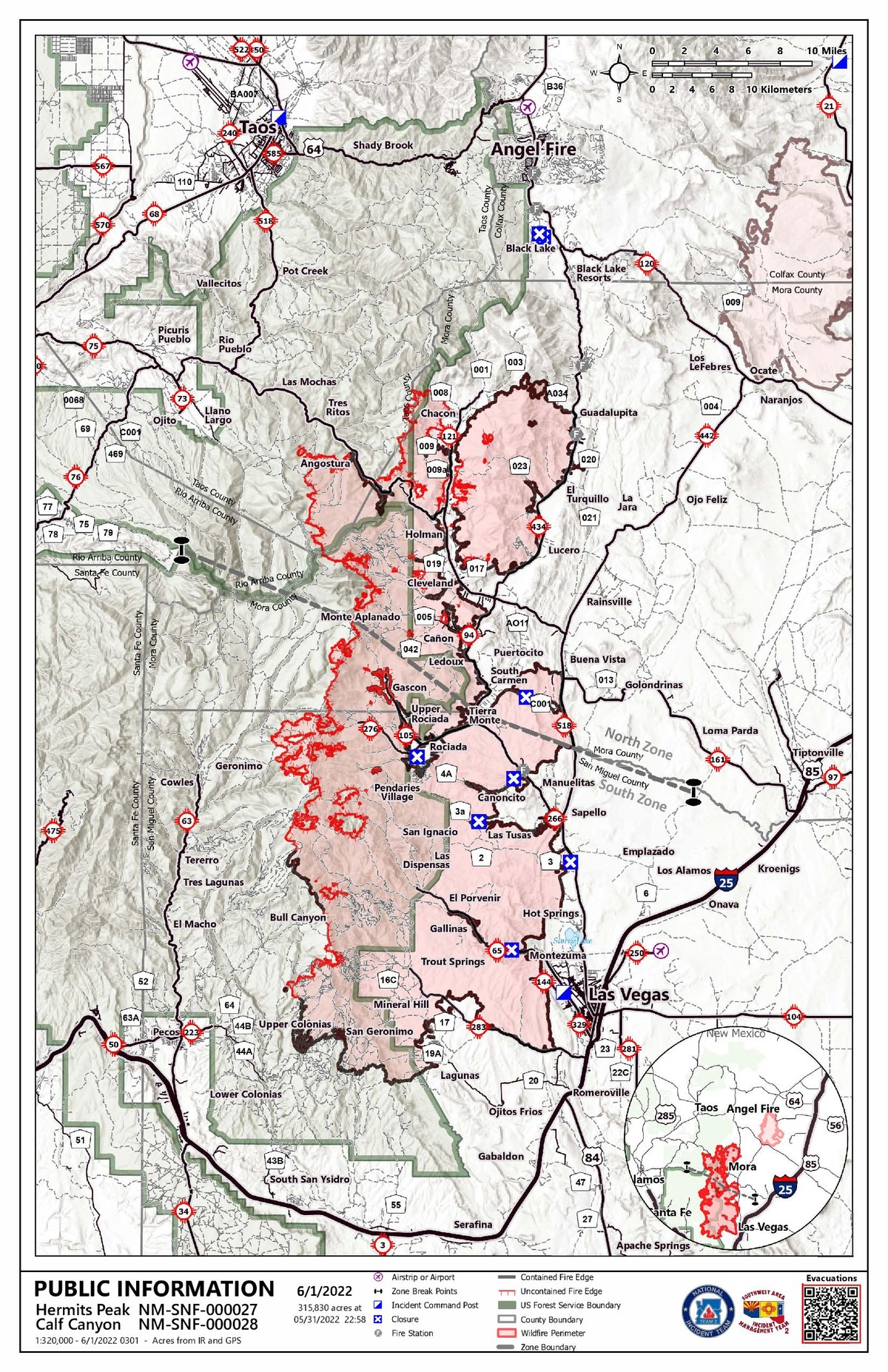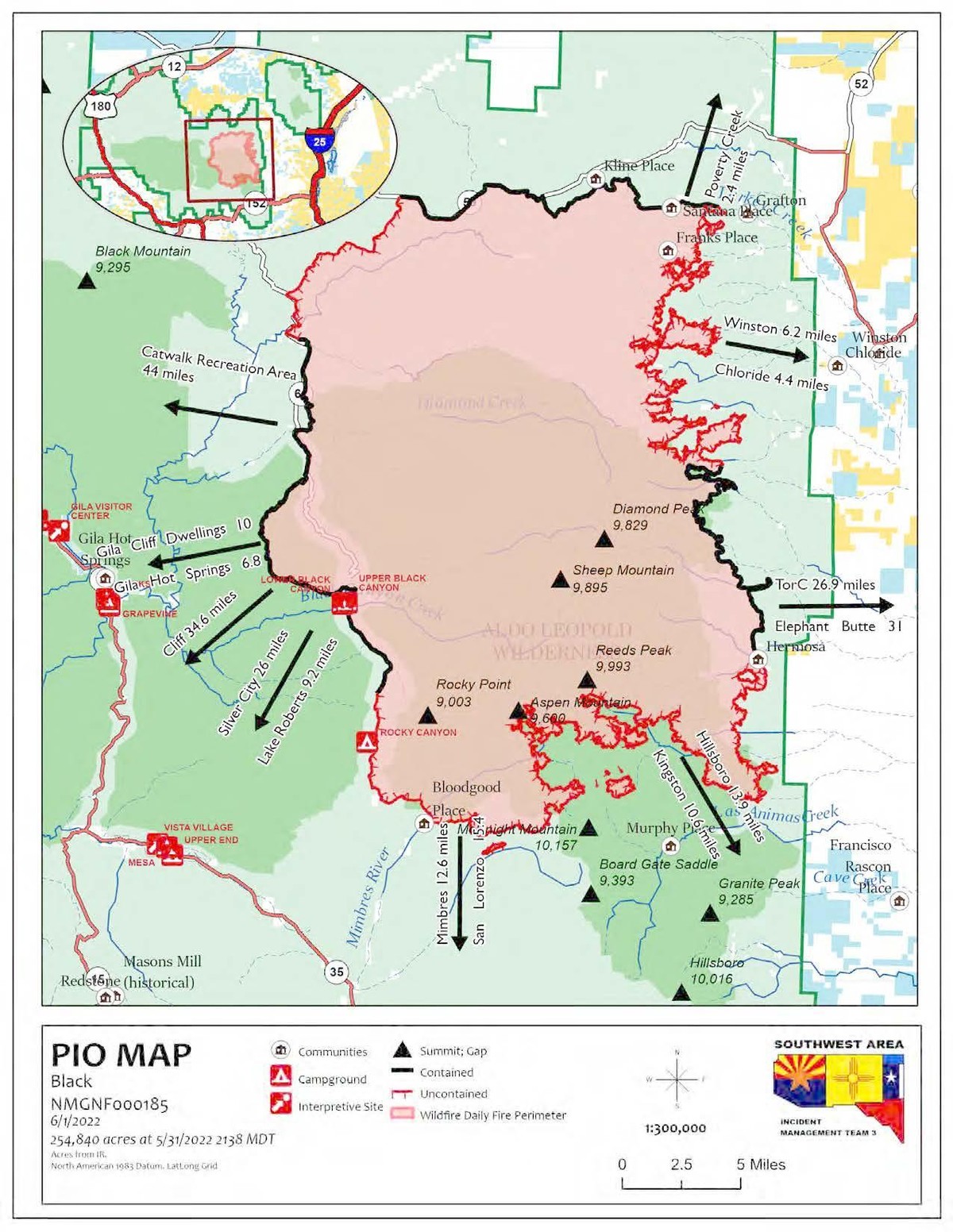Hermits Peak and Calf Canyon Fires grew to 315,830 acres — Black Fire now at 254,840 acres

The largest wildfire in New Mexico (maybe not for so long) still active almost a month and a half since it started on April 19. Thankfully, over the last weeks actions of thousands of personnel, and favorable weather conditions significantly reduced its spread.
Over the last 24 hours Hermits Peak and Calf Canyon Fires grew by 200 acres. The total affected area as of this morning is 315,830 acres. Improved weather over the next several days could bring some moisture and an opportunity for firefighters to make additional progress on extinguishing heat near the fire’s edge.
Though, thunderstorms could cause new fires to develop, crews will be ready to address new situation.

Black Fire
Another large scale wildfire in New Mexico — Black Fire — still spreading at significantly higher speed, steadily moving to overcome second largest fire in state history. And, quite possibly, might become the largest.
Latest infrared analysis indicates 254,840 acres affected by the blaze. About 25% of the fire contained, and crews will continue patrolling and mopping up, constructing direct and indirect control lines, prepping new line where needed, and using point protection tactics to protect private property, critical infrastructure and other values at risk. Slash chipping will continue. Hand and aerial ignitions will be used where needed to strengthen protection of values at risk and burn out fuels between constructed firelines and the main fire. Structure triage assessments and identification of values at risk will continue. Nighttime UAS may be utilized along with hand ignitions.

Potential for dry thunderstorms could bring outflow winds to the fire area as well as potential for additional ignitions. Fire will continue to persistently back and flank to the south in the Black Range, making upslope runs and wind-driven runs to the east. Continuous grass and east-west aligned drainages on the southeastern flank will allow for significant runs, particularly in the early evening when downslope winds become active.